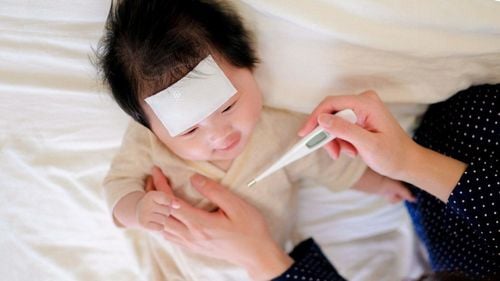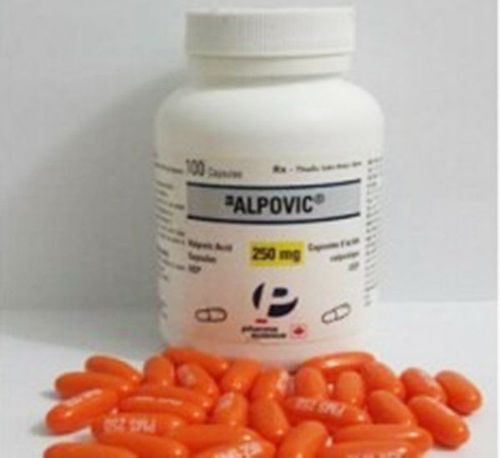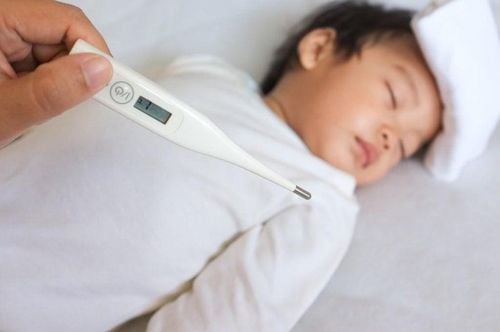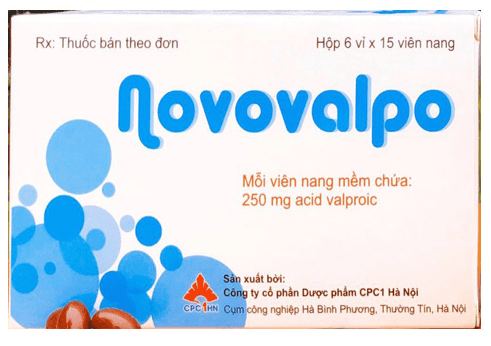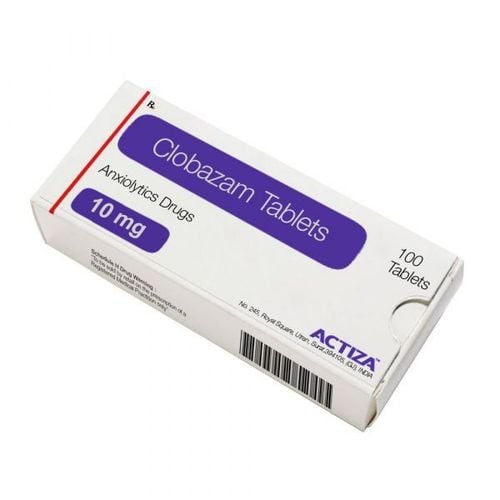This is an automatically translated article.
Seizures are a common neurological emergency in children and are caused by a variety of causes. Accordingly, an accurate diagnosis of convulsions in children is a prerequisite for effective treatment.
1. Causes of convulsions in children
Convulsions are temporary disturbances of movement, consciousness, sensation, and autonomic nerves caused by sudden excessive discharge of certain neurons. Seizures are a common neurological emergency in children. There are many forms of convulsions, the most severe of which is when a child has a convulsion that lasts for more than 30 minutes or a child has many convulsions in a row without waking intervals.
There are many possible causes of seizures in children , which can be classified into:
1.1. Seizures with physical damage to the brain (symptomatic seizures)
Seizures originate in a damaged area of the brain. In this damaged area, there are surviving nerve cells but in a state of abnormal nourishment. These cells are easily stimulated to cause seizures. The brain can damage one or more foci, the location of damage can be above or below the cerebral cortex. Causes of brain damage can be:
Meningococcal infection: children can get meningitis caused by viruses such as measles, whooping cough, chickenpox, mumps; infection with meningococcal bacteria, streptococcus, E.coli, tuberculosis,... Brain abscess due to bacterial infection from the sinuses or otitis media. Due to infection with malaria parasites, toxoplasma,... Brain injury: The baby can have brain damage due to obstetric procedures such as suction, Forceps, anesthesia, excessive anesthesia,... too fast or too long. Complications during the birth process such as placenta entrapment, placental cord prolapse, asphyxia causing lack of oxygen to the fetus are also at risk of causing brain damage in the child. Tumors: brain stem tumors, cerebellar tumors are common in children 5-8 years old. Congenital anomalies that can cause seizures in children such as cerebrovascular malformations, cerebral embolism.
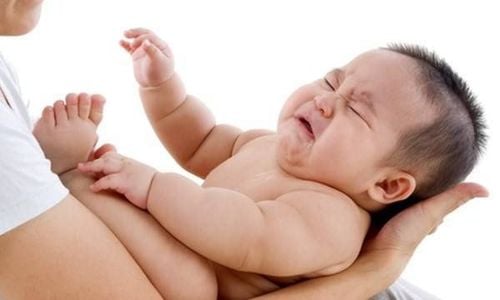
Co giật ở trẻ là một triệu chứng rất nguy hiểm và gây ra nhiều biến chứng
1.2. Seizures due to brain dysfunction
In pediatric seizures due to brain dysfunction, febrile seizures account for the majority of cases. Febrile seizures are common in children aged 6 months to 5 years, of which the most common is in children 2-3 years old. Seizures appear suddenly when the child has a high fever of 39-40 degrees, usually a generalized, generalized convulsion, the duration of each convulsion does not exceed 10 minutes. EEG results were normal, cerebrospinal fluid was normal. Febrile seizures are usually benign, uncomplicated, and the shorter the seizure, the better the prognosis.

Sốt cao cũng gây ra tình trạng co giật ở trẻ
1.3. Convulsions due to metabolic disorders
Children have seizures due to metabolic disorders such as:
Leucine infection: is a recessive genetic disease caused by a disorder in the decarboxylation process in the body. Convulsions due to hypocalcemia: common in breastfed infants. Children appear sudden convulsions, convulsions, visceral convulsions, laryngospasm, Chvotek-Trousscau sign (+) which is usually caused by early rickets, diarrhea. Phenylketonuria: clinical symptoms are eczema, mental retardation, local convulsions in the folded position. This is a recessive genetic disease caused by a deficiency of the enzyme Phenyl alanine 4 hydroxylase. Convulsions due to increased free Bilirubin: is the phenomenon of too much free Bilirubin and bile salts causing neurotoxicity. Children with jaundice, convulsions increase muscle tone. Convulsions due to blood glucose disorders: children have signs of sweating, cold hands and feet, poor feeding, heart palpitations, tremors, convulsions, twitching limbs,... Convulsions due to hyponatremia or hypernatremia: When blood sodium is less than 120 mmol/liter, convulsions may occur. This phenomenon is common in children with hypotonic diarrhea, dehydration, and long-term diet. When blood sodium above 150 mmol / liter can also have symptoms of convulsions. Hypernatremia is common in cases of diabetes insipidus, hypertonic diarrhea, prolonged high fever, burns, heatstroke,... Convulsions due to hypomagnesemia when blood magnesium concentration is lower than 0.5 mmol/l, manifests itself. muscle weakness, convulsions, body tremors. In addition, vitamin B6 deficiency, taking certain medications such as camphor, strycin, or high blood pressure due to glomerulonephritis can also cause seizures in children. In addition, if the child has chronic, recurrent seizures, the seizures share the same clinical features, prognosis, and etiology, the child may have seizures due to epilepsy syndrome.
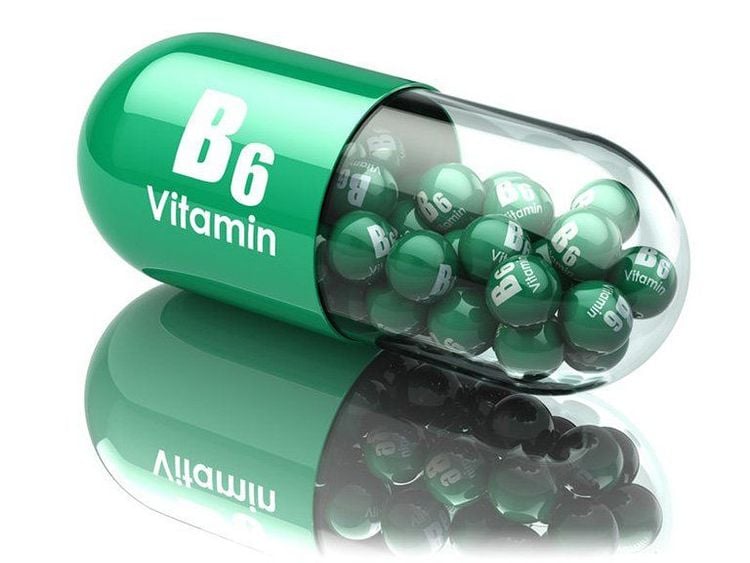
Thiếu vitamin B6 làm tăng nguy cơ co giật ở trẻ
2. Diagnosis of convulsions in children
When receiving a child with a convulsion, in order to extract information to diagnose the disease, the doctor will ask family members about:
The child's medical history: has the child ever had a febrile seizure before, had a concussion. head injury, exposure to toxins or epilepsy, metabolic disorders, psychomotor diseases, etc.? Child's medical history: has the child had fever, anorexia, diarrhea,... in recent days? What is the nature of the child's convulsion, the duration of the convulsion, etc.? Next, the doctor will perform a clinical examination and prescribe paraclinical techniques. Clinically, will examine:
Children's perception; Measure pulse, blood pressure, body temperature, breathing rate, SaO2; Look for trauma-related skin lesions; Looking to detect signs of anemia, focal neurological signs, signs of meningitis such as stiff neck, bulging fontanelle,... In terms of clinical examination, the child will be tested for blood count, laboratory tests. look for malaria parasites. Except for cases when it is determined that the child has a febrile convulsion, other cases need to be done for the child:
Blood sugar test, ionogram, Dextrostix Lumbar puncture for biochemical, cellular, bacteriological tests, Latex, IgM, encephalitis serum (Mac Elisa, HI). EEG EEG if epilepsy is suspected Transfocal echo brain CT scan brain if suspected brain tumor, hematoma, brain abscess if transfocal ultrasound cannot be performed or ultrasound has M-echo deviation.
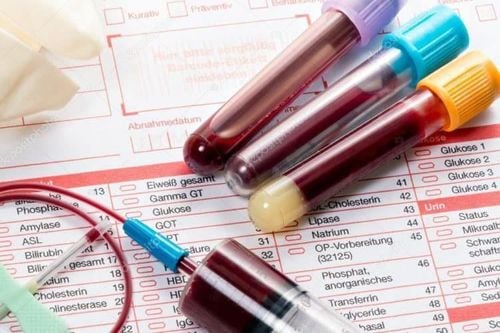
Xét nghiệm công thức máu giúp chẩn đoán cận lâm sàng
Based on examination results and paraclinical results, the doctor will diagnose the cause of convulsions in children and have appropriate treatment. Convulsions can cause very dangerous complications such as brain hypoxia, airway obstruction, and even death. Therefore, when a child has a convulsion, as soon as the child ends the seizure, parents need to take the child to a medical facility to diagnose a child's convulsion and treat it promptly.
Convulsions can leave many dangerous medical complications, so parents need to know the signs of convulsions for early examination and timely treatment.
Vinmec International General Hospital is the address for examination, treatment and prevention of diseases, including the pediatric - neonatal specialty. When performing the examination process at Vinmec, customers will be welcomed and used modern facilities and equipment along with perfect medical services under the guidance and advice of experts. Good doctors, well-trained both at home and abroad.
Customers can directly go to Vinmec Health system nationwide to visit or contact the hotline here for support.





